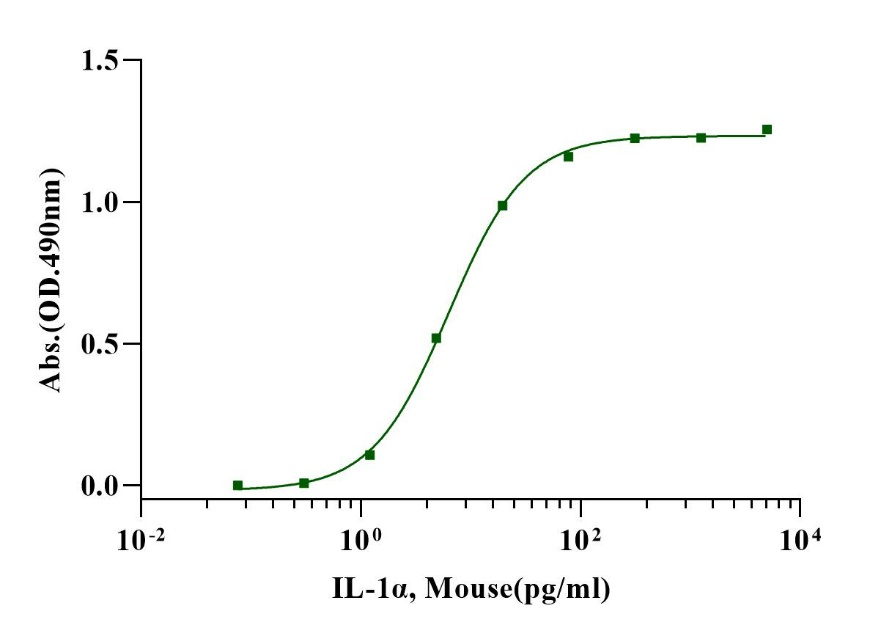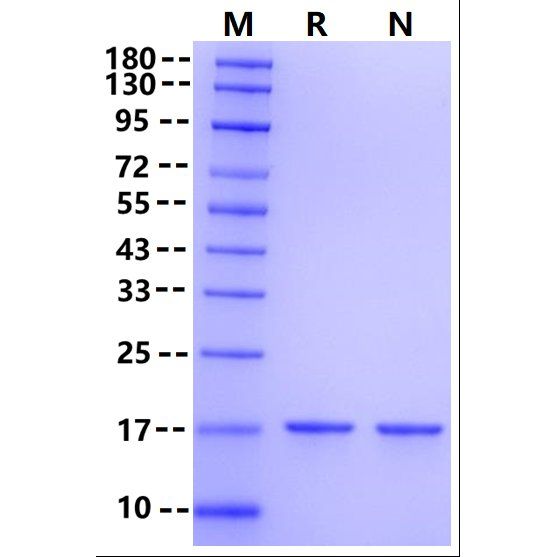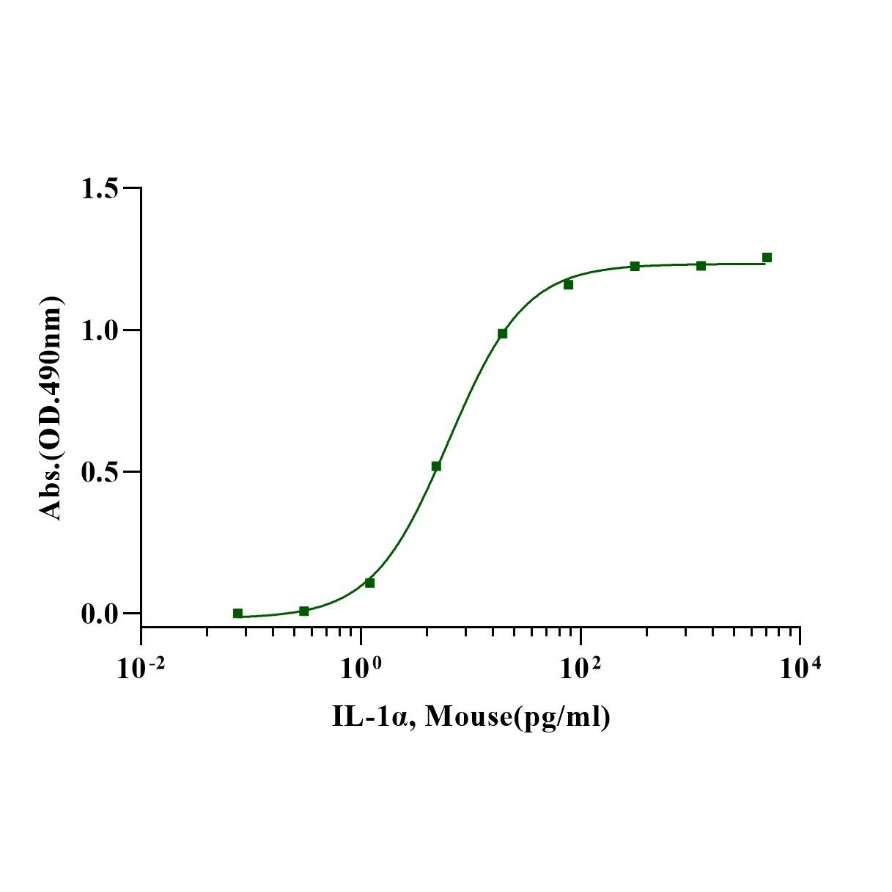Measured in a cell proliferation assay using D10.G4.1 mouse helper T cells. The EC50 for this effect is less than 6pg/ml.
Product Details
Product Details
Product Specification
| Species | Mouse |
| Synonyms | IL1A; IL-1A; IL1; IL1-ALPHA; IL1F1; interleukin 1 alpha; IL-1 alpha; IL-1α |
| Accession | Q62161 |
| Amino Acid Sequence | Ser6-Ser161 |
| Expression System | E.coli |
| Molecular Weight | 18 kDa (Reducing) |
| Purity | >95% by SDS-PAGE |
| Endotoxin | <0.1EU/μg |
| Conjugation | Unconjugated |
| Tag | No Tag |
| Physical Appearance | Lyophilized Powder |
| Storage Buffer | PBS, pH7.4. |
| Reconstitution | Reconstitute at 0.1-1 mg/ml according to the size in ultrapure water after rapid centrifugation. |
| Stability & Storage | · 12 months from date of receipt, lyophilized powder stored at -20 to -80℃. · 3 months, -20 to -80℃ under sterile conditions after reconstitution. · 1 week, 2 to 8℃ under sterile conditions after reconstitution. · Please avoid repeated freeze-thaw cycles. |
| Reference |
1. Nicklin MJ,et al. (1994) A physical map of the region encompassing the human interleukin-1 alpha, interleukin-1 beta, and interleukin-1 receptor antagonist genes. Genomics. 19(2):382-4. 2. March CJ, et al. (1985) Cloning, sequence and expression of two distinct human interleukin-1 complementary DNAs. Nature. 315(6021):641-7. 3. Bankers-Fulbright JL, et al. (1996) Interleukin-1 signal transduction. Life Sci. 59(2):61-83. 4. Dinarello CA, et al. (1997) Induction of interleukin-1 and interleukin-1 receptor antagonist. Semin Oncol. 24 (3 Suppl 9): S9-81-S9-93. |
Background
IL-1 alpha is a member of the interleukin 1 cytokine family. Cytokines are proteinaceous signaling compounds that are major mediators of the immune response. They control many different cellular functions including proliferation, differentiation, and cell survival/apoptosis but are also involved in several pathophysiological processes including viral infections and autoimmune diseases. Cytokines are synthesized under various stimuli by a variety of cells of both the innate (monocytes, macrophages, dendritic cells) and adaptive (T- and B-cells) immune systems. Cytokines can be classified into two groups: pro- and anti-inflammatory. Pro-inflammatory cytokines, including IFN gamma, IL-1, IL-6, and TNF-alpha, are predominantly derived from the innate immune cells and Th1 cells. Anti-inflammatory cytokines, including IL-10, IL-4, IL-13, and IL-5, are synthesized from Th2 immune cells. IL-1 alpha is a pleiotropic cytokine involved in various immune responses, inflammatory processes, and hematopoiesis. It is produced by monocytes and macrophages as a proprotein, which is proteolytically processed and released in response to cell injury, and thus induces apoptosis. IL-1 alpha stimulates thymocyte proliferation by inducing IL-2 release, B-cell maturation and proliferation, and fibroblast growth factor activity.
Picture
Picture
Bioactivity

SDS-PAGE

1μg (R: reducing condition,N: non-reducing condition).




